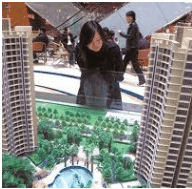
The AFR ran a series of interesting articles over the weekend (here, here and here) on the nascent glut of high-rise apartments being constructed across Australia’s major capital cities, which risks morphing CBDs into “high-rise ghost towns”:
Hidden behind the national housing shortage which has forced house prices up by 10 per cent nationally is a glut of inner-city apartments which in some cities is already driving down rents.
Even more supply is coming, with 41,400 high rise apartments approved last year, a 30 per cent increase on 2012.
The surge is driven by Asian and local developers and is being encouraged by state governments, low interest rates, and changing demographics. Offshore investors and local self-managed superannuation funds have helped to prop-up demand but experts are now warning investors to keep clear.
“We are beginning to see high-rise ghost towns,” said Christopher Koren, a director of Morrell & Koren, a buyers’ advocate, former auctioneer and 30-year veteran of the property market.
…agents claimed the unimaginative design, small size and lack of amenity in many of the large developments being built in central business districts…
Apartment building is becoming a new “export” industry for Australia, with many high-rise developments now targeted at foreign investors rather than local buyers.
While I have no issue with such sales, policy makers should not delude themselves that such developments are an answer to Australia’s housing affordability woes or perceived housing shortages. The size of apartments has been shrinking making them unsuitable for most local buyers. According to The AFR, the average size of an apartment five years ago was 60 square metres, whereas today it is between 42 and 45 square metres and falling. Moreover, many of the apartments sold to foreigners are being kept empty, therefore they are not actually adding to the supply of rental accommodation.
Another key cause of the acceleration of apartment building across Australia are urban consolidation policies pursued by Australia’s various levels of government, which have forced-up land costs and made the development of free-standing homes unaffordable and/or less attractive to would-be buyers. Last week’s release of land price data from RP Data illustrated this point, showing the median price of fringe land rising by nearly 500% over the past 20 years at the same time as lot sizes have shrunk (see below charts).
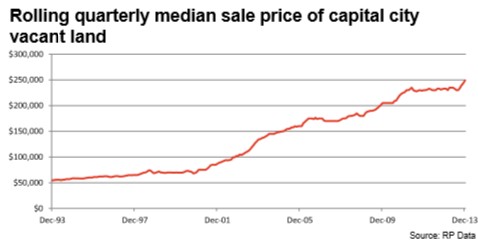
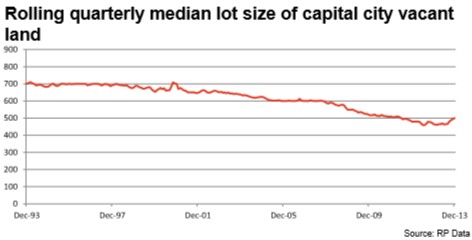
The median vacant land price was $249,000 across Australia’s capital cities in the year to August 2013. When you add in build costs of $150,000 to $200,000 for a starter home, it is little wonder that detached houses have become less attractive to prospective buyers, with apartments becoming the housing option of choice on affordability grounds.
The below charts, which decomposes the ABS’ dwelling approval data, shows the supply situation more clearly.
First, the national picture shows that the recent upswing in construction has been driven primarily by units and apartments, with their share hitting a record 46.5% in the six months to January 2014:
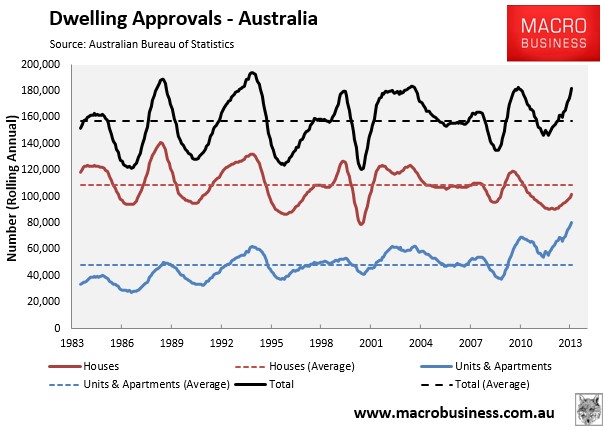
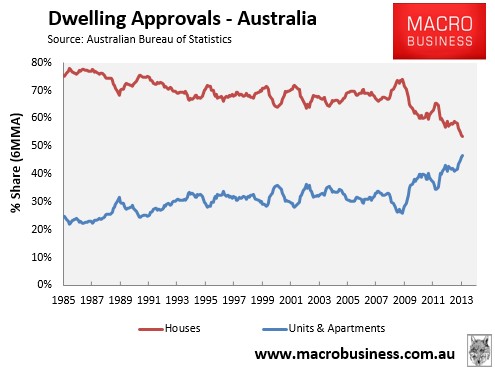
Looking at the state and territory level, you can see that apartment & unit construction is most dominant in Sydney, Canberra, Darwin, Brisbane, and Melbourne, where shares are all over 50%, with Sydney, Melbourne, and Brisbane driving the uptrend nationally (see below charts).
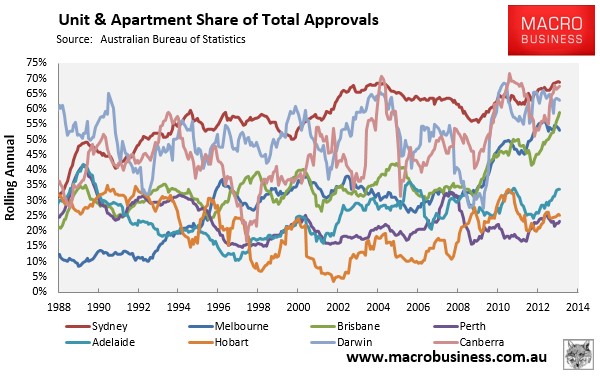
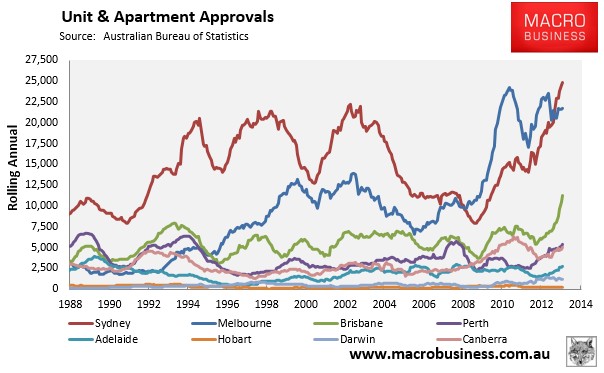
With foreign investment and self-managed super fund activity still running hot, the apartment boom could run for a while yet. And given the long lead times between approval and completion (typically three years for high rise apartments versus six months for detached houses), there is the potential that apartments will still be getting constructed en masse after the market has turned, exacerbating any downturn.
Buyer beware.

